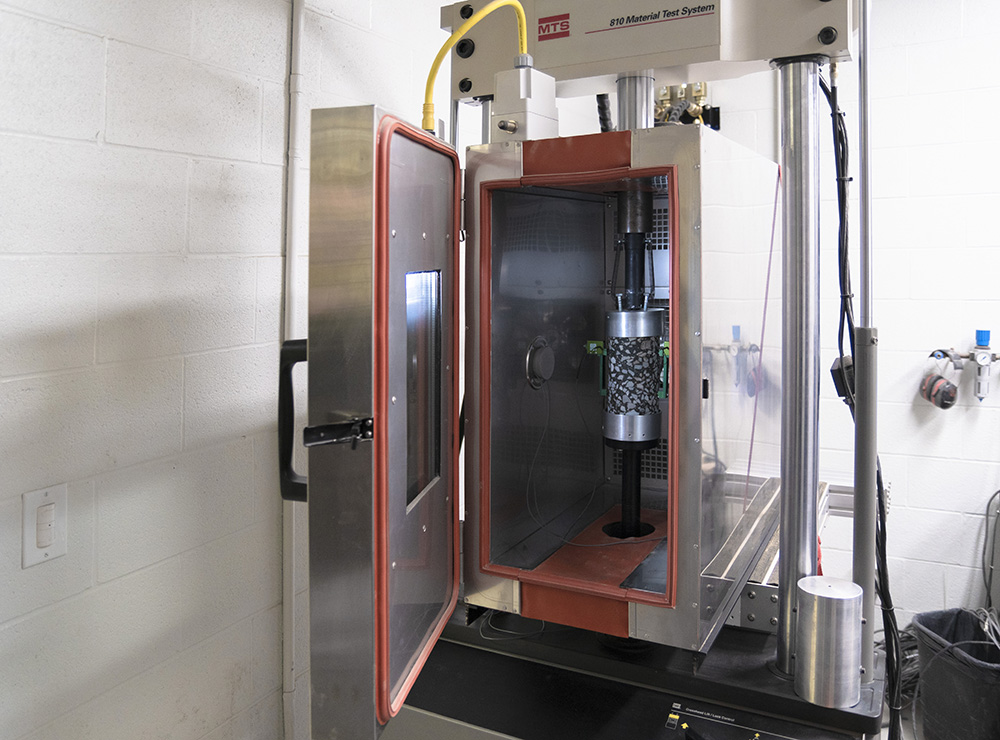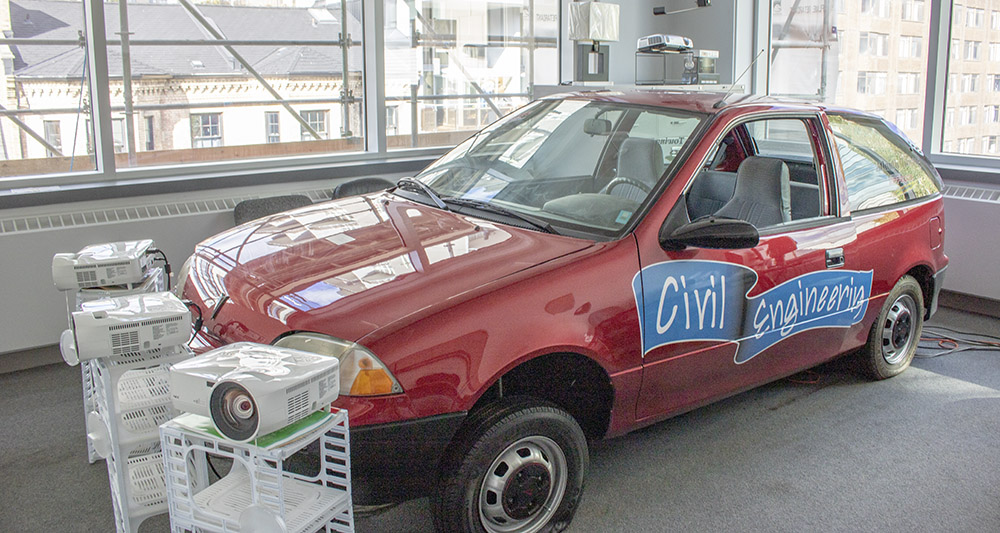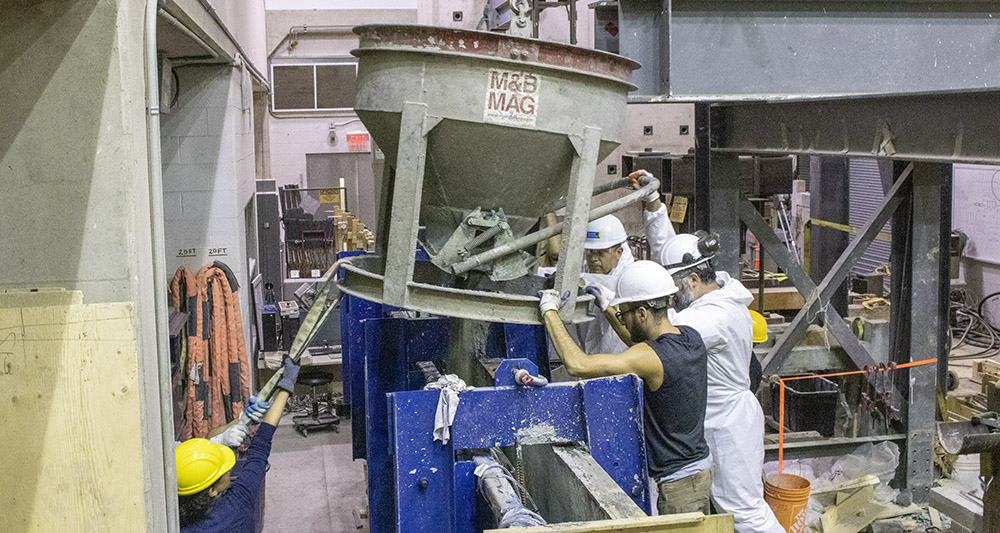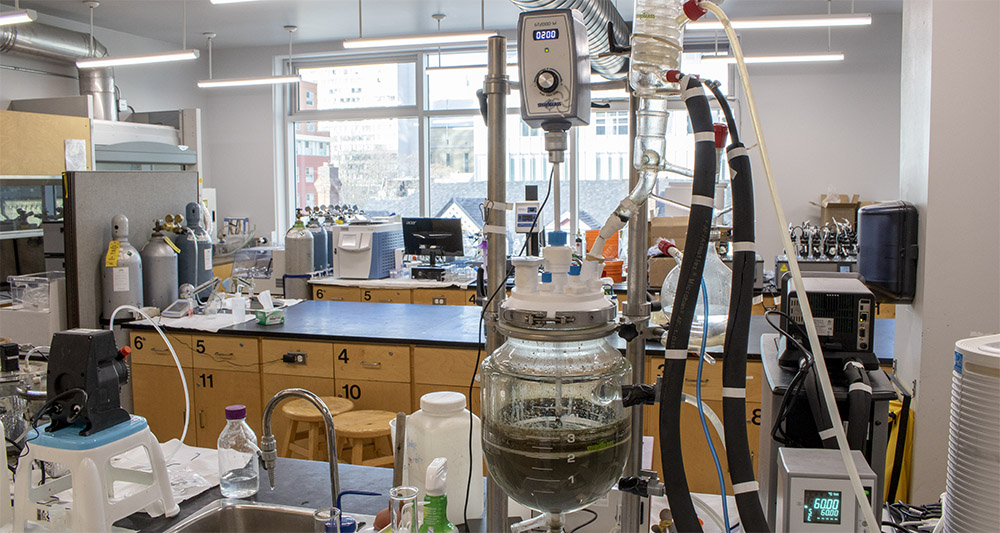Research
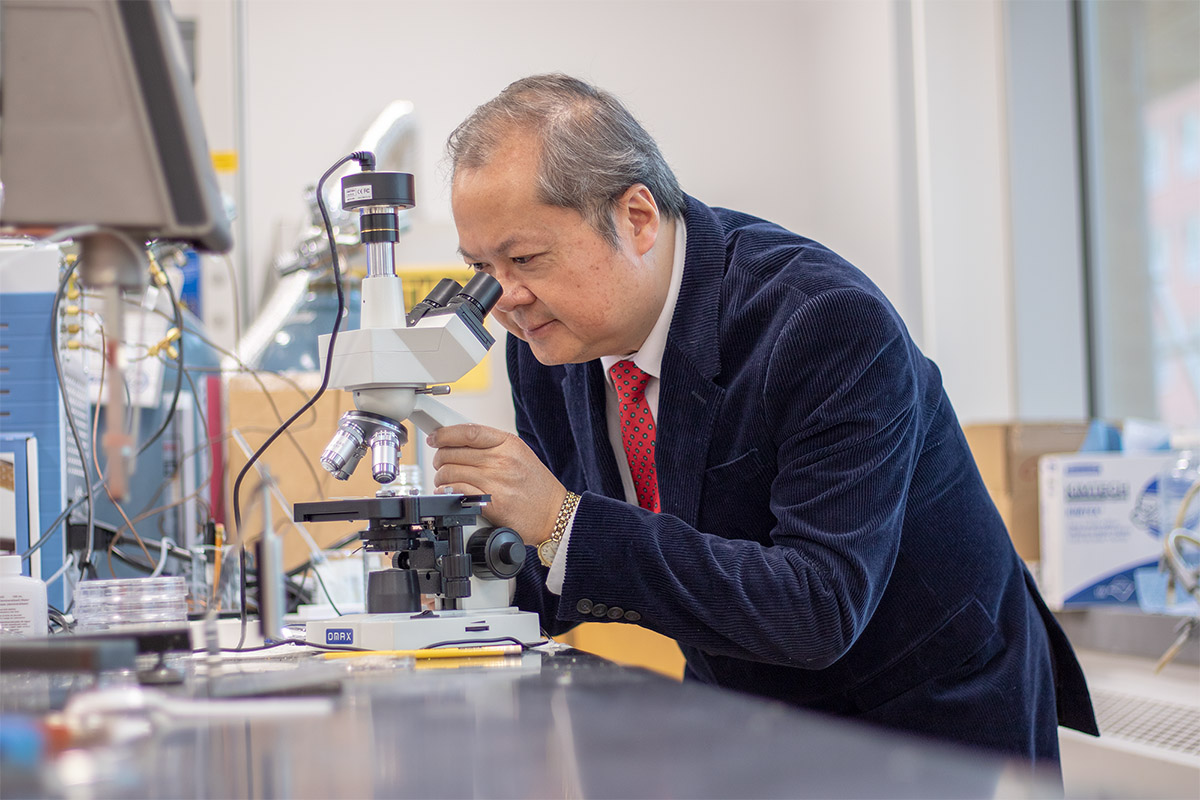
Our faculty and graduate students are addressing the rapidly changing needs of society. By working together—and in partnership with industry—advancements are being made in environmental, geomatics, structural, geotechnical and transportation engineering, as well as construction and infrastructure management. From predicting structural responses to wind via fluid dynamics simulations and recovering value-added products from waste, to disruptive transportation technologies like connected autonomous vehicles, revolutionary research is happening in the Department of Civil Engineering.

“Our unique multidisciplinary program enables research that provides solutions to data collection with satellites, sensors and social networks, and the design, monitoring, assessment and management of civil structures and infrastructure."
Dr. Songnian Li, PEng, OLS/OLIP
Professor, Geomatics Engineering
Associate Chair, Graduate Studies
From wind tunnels to virtual reality environments, our laboratories and facilities give you the opportunity to perform sophisticated civil engineering research and experimental investigation.
ENG-LG19
This laboratory provides a controlled environment that tests complex structural systems and construction prototypes for durability and fatigue, and simulates the real-life cycle of structures like bridges, roads and buildings under the effect of repetitive loads, chemical applications, and environmental conditions such as changes in temperature and humidity. The lab features environmental and freeze/thaw cabinets, an MTS 100 kN testing machine, rapid chloride permeability test equipment, a concrete rheometer, and a programmable cone fire. Research work carried out in this lab is supplemented by advanced analytical techniques performed via thermal analyzers, x-ray diffraction equipment and a scanning electron microscope, which are available in various labs on campus.
ENG-LG23
This lab enables research in the area of aggregate reactions and concrete durability. It is equipped with different concrete mixtures, a standard curing room, a 50% relative humidity room, and two heat rooms for accelerated aggregate reactions in concrete. Research in this lab consists of experimental, numerical and design-oriented analyses focused on the development and performance evaluation of sustainable materials, self-consolidating concrete, and ultra-high-performance concrete. Smart self-healing materials are studied, as well as engineered concrete, geopolymer composite and steel/GFRP reinforced structural systems for the construction of robust and innovative bridges, buildings and other infrastructures.
MON-412
Research in this lab concerns maximizing value-added product recovery from waste while reducing greenhouse gas emissions. Particular focus is dedicated to anaerobic digestion and dark fermentation.
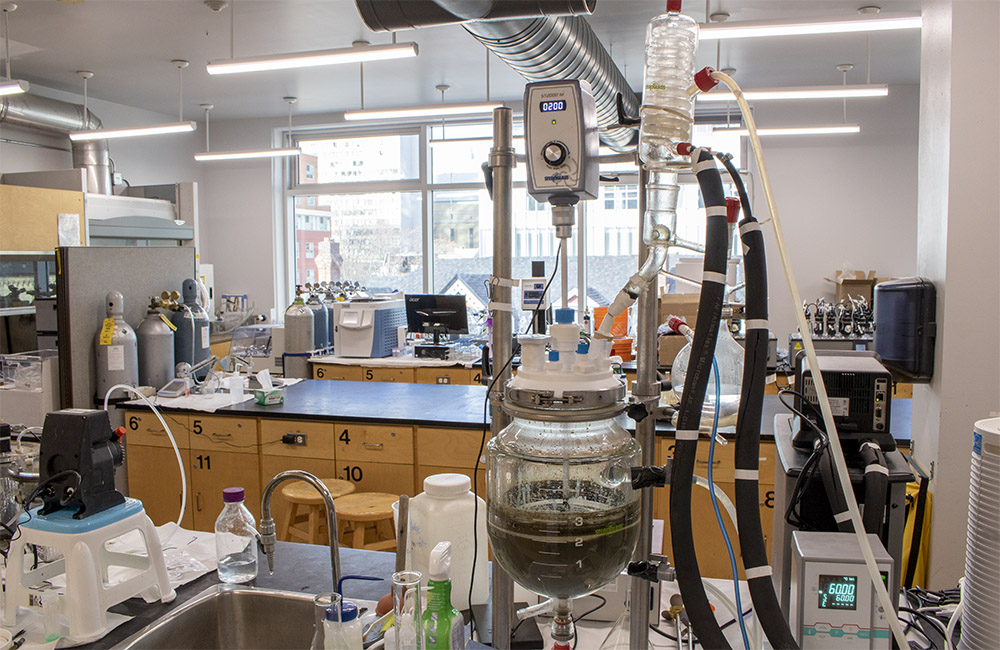
MON-104
The ELISA laboratory is the first academic facility that focuses on the analysis of persistent toxic substances in the environment. Two types of ELISA procedures for dioxins and microcystins were developed by Dr. James Li and his research team and approved by the Ontario Ministry of Environment, Conservation and Parks. The laboratory has a licensed fume hood, a nitrogen generator for evaporation of chemical solvents and colorimetric devices for analyzing dioxins in addition to conventional chemical apparatus such as electronic balances and microscopes.
CUI
This lab is equipped for flushability testing of consumer products according to International Water Services Flushability Group specifications. For research purposes, a standard toilet with water supply and drain, a slosh box, scales, drying oven and sieves are available.
KHN-101
Intended for applied geotechnical research and the career-ready training of graduate students, this lab enables researchers to focus on three main projects: 1) improving pile design in Ontario; 2) stabilizing Champlain Sea clay via deep soil mixing; and 3) characterizing geotechnical properties of glacial deposits. Test equipment in the lab includes a cyclic triaxial system, direct shear set-up, permeability panel and an ultrasonic NDT system. Available software packages include Plaxis 2D and 3D, SAP2000, FLAC and RocScience.
MON-304
Established in 2003 through a research infrastructure project funded by the Canadian Foundation for Innovation (CFI) and Ontario Innovation Trust (OIT), with the support of ESRI Canada and Intergraph Canada, this lab is utilized for geospatial collaboration and geographical information systems (GIS) research. Various hardware is available, including a video wall system, a Jupiter Catalyst display wall controller, and Intel SYSi7WORK workstations. Software includes Esri’s ArcGIS for desktop, Bentley’s AECOsim Building Designer, as well as ERDAS Imagine and PCI Geomatics.
MON-104
In this lab, research on hydraulic structures and systems is performed. Hydraulic benches and rainfall simulators are used to teach the fundamental concepts of hydraulic engineering, and custom-made physical models are made and used to study the hydraulic characteristics of open-channels and closed conduit pipes.
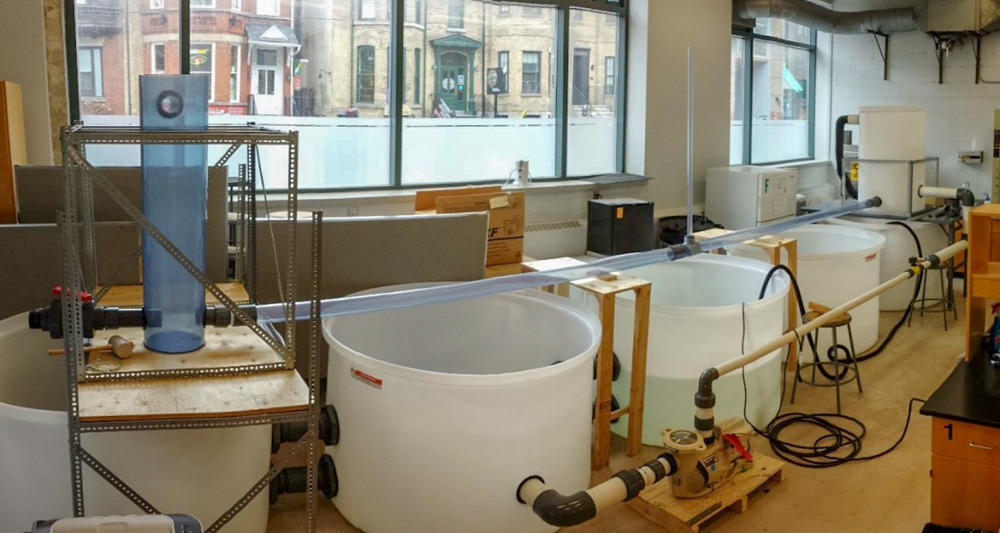
MON-116
This lab features advanced equipment designed to research the management of the urban water supply, including a rainfall simulator, benched manhole, pumps, level and flow monitoring equipment, data loggers and more.
CUI-330
LiTrans focuses on emerging issues in transportation systems such as disruptive transportation technologies and services, “complete streets,” cyber-physical systems, pedestrian dynamics, resilience, and climate change. Researchers address these issues using a highly interdisciplinary approach from the perspective of mathematics, engineering (civil, transportation, etc.), computer science, and economics. The lab features a VR environment for pedestrian and driving experiments, quadcopters, a Raspberry Pi–based IoT sensors network, and visual, thermal and 3D sensors.
Visit the LiTrans (external link, opens in new window) website.
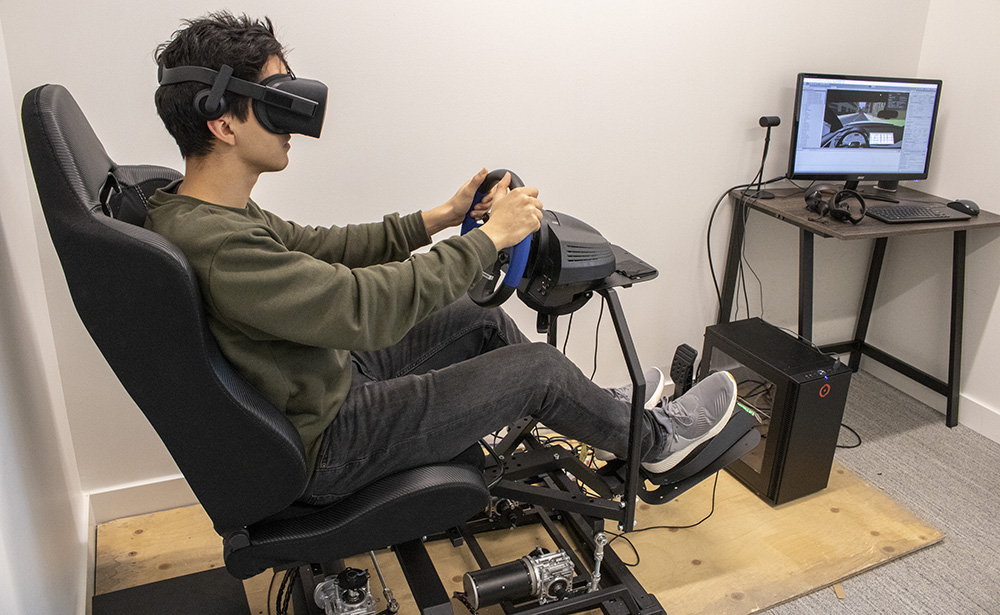
MON-314
In this lab, researchers and undergraduate students develop tools for image data processing and developing low-cost sensor integration approaches and related algorithms in order to facilitate ubiquitous geospatial information extraction for both indoor and outdoor environments. Research includes satellite image processing, airborne LiDAR data processing, UAV photogrammetry and algorithmic development activity such as image registration and rectification, radiometric correction and normalization, image classification and sensor data fusion. The lab’s state-of-the-art equipment includes a panoramic terrestrial laser scanner, LiDAR sensor for mobile mapping, hyperspectral camera, and an integrated drone that mounts with positioning and data capturing systems.
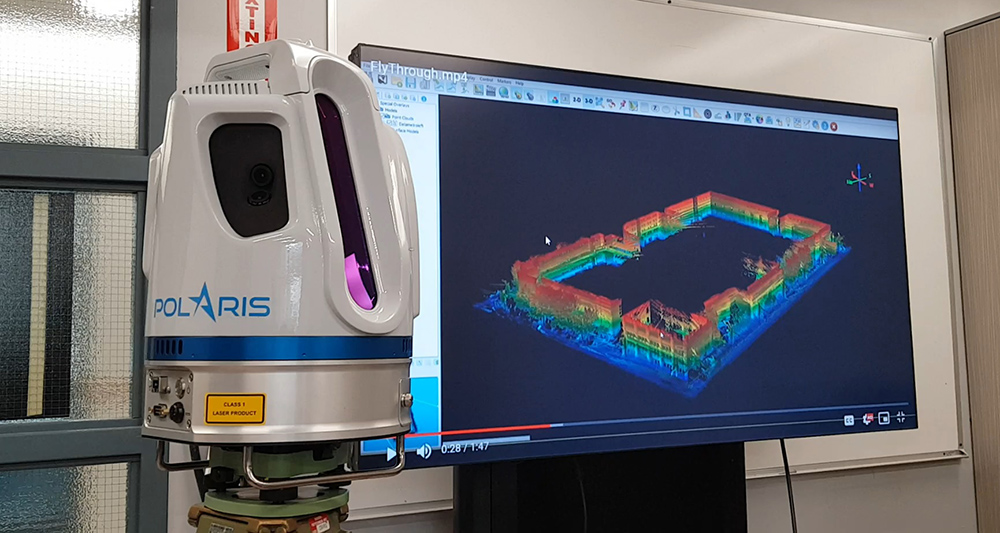
MON-404
Available to graduate and undergraduate students who are interested in driver-behavior research, the lab is supported by three NSERC research tool instrument grants and features a basic driving simulator, vehicle dynamics modules, and eye-tracking equipment. All this is integrated into a real car which features a wide view (135o), vehicle-dynamics software, and additional equipment such as visual occlusion glasses.
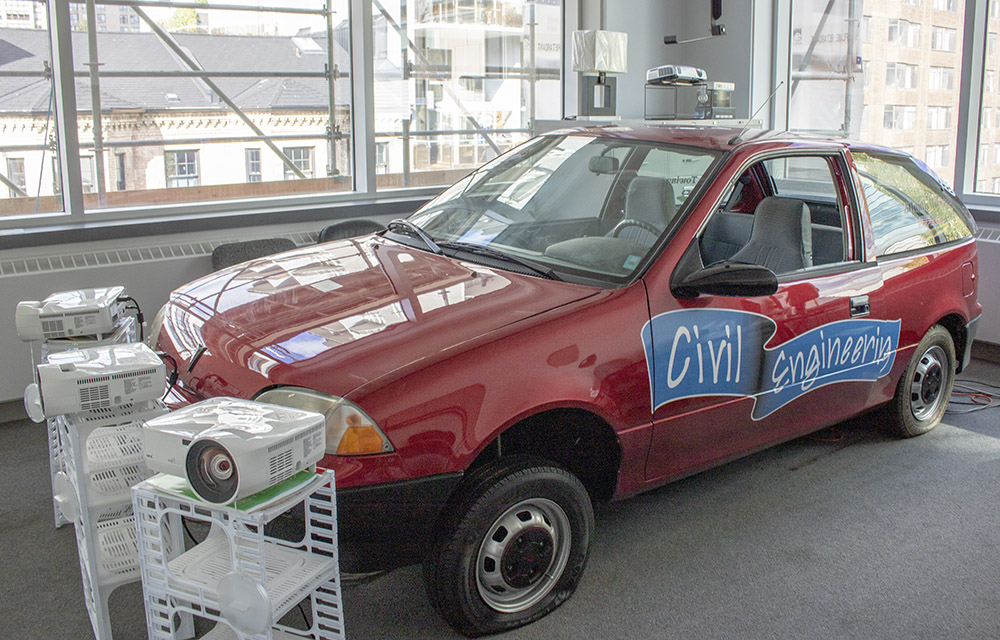
KHS-037
This wind tunnel was calibrated and automated to simulate atmospheric boundary layers, thunderstorm gust fronts and tornadoes and their effects on structures. The tunnel is equipped with state-of-the-art sensors and automatic control to achieve reliable and efficient testing. Designs are optimized using computational fluid dynamics and are tested in the tunnel for validation.
ENG-LG26
Research in this lab is concerned with the development of an advanced strategy for structural health monitoring for bridges, offshore platforms, and nuclear power stations. Research in the lab also involves testing full-scale specimens representing segments from a typical concrete containment structure, including rectangular or circular configuration subjected to static and/or seismic loads while subjected to liquid pressure simulating leakage in cracked concrete sections. Moreover, research in this lab involves prefabricated bridge elements and connection technologies to accelerate bridge construction, bridge barriers reinforced with glass fibre reinforced polymer (GFRP) bars and stainless steel bars for sustainable construction, structural insulated foam-timber panels (SIPs), and cold-fold steel in residential construction and innovative steel-skinned structures. Materials studied in this lab include reinforced and prepressed concrete, including ultra-high performance concrete (UHPC) and engineered cementitious composite (ECC), steel and timber.
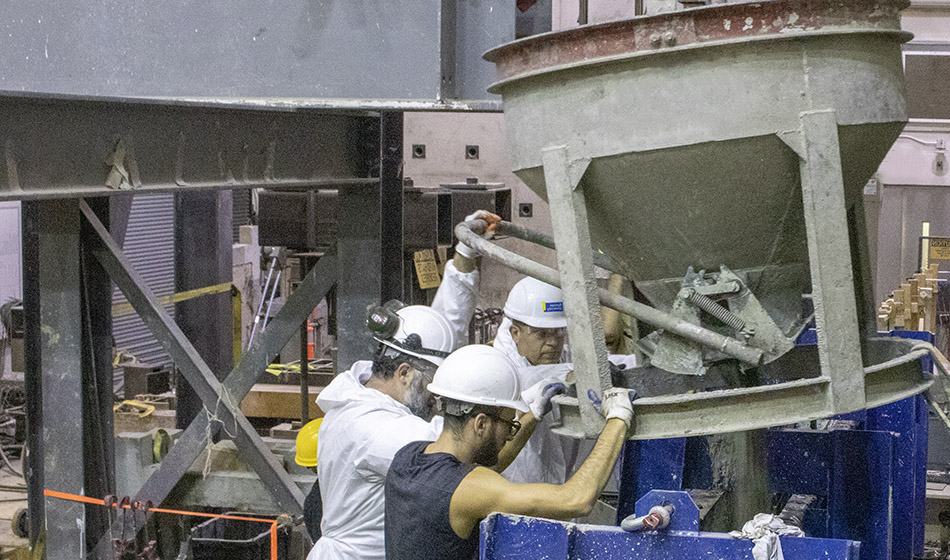
ENG-LG22
The lab is equipped with aggregate, binder and asphalt mixture testing equipment, including Superpave gyratory compactors and binder testers. Undergraduate students carry out testing on granular bases and design asphalt mixtures using Marshall and Superpave methods. The lab is also equipped with an MTS testing facility and an environmental chamber that enables research pertaining to performance of asphalt mixtures and Portland cement concrete samples under combination of static, cyclic and environmental loading.
